Easter is more than a religious celebration; it’s a time to gather loved ones and indulge in a feast that reflects the spirit of renewal and hope. A traditional Easter dinner is steeped in rich history and symbolism, with many of the dishes reflecting themes of rebirth, renewal, and spring. Whether you’re preparing a grand meal for family and friends or hosting a more intimate gathering, the essence of a traditional Easter dinner lies in thoughtful preparation and attention to detail. From savory roasts to sweet desserts, this meal is often the culinary highlight of spring.
The menu typically includes classic dishes passed down through generations, each with its significance. For many, Easter dinner wouldn’t be complete without lamb, symbolizing sacrifice and renewal, or ham, a symbol of abundance. Side dishes such as fresh vegetables and spring-inspired salads bring vibrancy to the table, while rich desserts like carrot cake and hot cross buns end the meal on a sweet note. The beauty of a traditional Easter dinner lies in its balance between old and new, tradition and innovation, simplicity and indulgence.
The Importance Of A Well-Planned Traditional Easter Dinner Menu

Planning an Easter dinner requires forethought and organization. A well-planned menu ensures that every dish complements the other, creating a harmonious dining experience that satisfies both the palate and the soul. An ill-conceived menu, however, can lead to stress, chaos, and a dining experience that feels disjointed. This is why it’s essential to map out your menu well in advance.
A successful Easter menu takes into consideration the balance of flavors, textures, and dietary preferences of guests. It’s important to think about timing as well – preparing dishes that require minimal last-minute attention allows the host to enjoy the celebration as much as the guests. When planning your menu, also consider the seasonality of ingredients. Spring offers an abundance of fresh produce, from tender asparagus to young carrots, that can make your meal not only delicious but also symbolic of the season’s renewal. A well-planned menu isn’t just about taste; it’s about crafting an experience that everyone will remember long after the last bite.
How to Simplify Hosting a Traditional Easter Dinner?
Hosting a large gathering like Easter dinner can be overwhelming, but it doesn’t have to be. With a bit of preparation and some smart strategies, you can simplify the process and focus on what matters: spending time with your loved ones. The key to simplifying your Easter dinner is to plan. Start by making a checklist of everything you’ll need, from ingredients to serving dishes, and create a detailed timeline for when each dish needs to be prepared.
Delegating tasks is another effective way to lighten the load. Don’t hesitate to ask guests to contribute by bringing a dish or helping with the setup. You’ll find that most people are happy to lend a hand. Additionally, opt for dishes that can be prepared in advance or that require minimal hands-on time. Roasts, casseroles, and make-ahead desserts are all great options. Lastly, don’t forget to set the table and arrange any decorations the night before to avoid a last-minute scramble. Simplifying your Easter dinner isn’t about cutting corners; it’s about being thoughtful in your approach so you can enjoy the day with less stress.
Key Elements of a Traditional Easter Dinner Menu
A traditional Easter menu typically revolves around a few key elements: a main protein, such as lamb or ham. A variety of sides that highlight seasonal produce; and a selection of indulgent desserts. The main dish is often the centerpiece of the meal, with the sides and desserts acting as complements. When crafting your menu, focus on dishes that not only taste great but also carry symbolic or cultural significance.
Spring vegetables, fresh herbs, and vibrant salads are popular side dishes that add color and texture to the meal. You’ll also want to incorporate bread, such as soft dinner rolls or rustic loaves, to round out the offerings. For dessert, traditional Easter treats like hot cross buns, carrot cake, and lemon-infused desserts are both comforting and celebratory. Be sure to also include a selection of beverages, from sparkling wine to refreshing spring cocktails, to complete the meal.
Choosing The Right Dishes For Your Easter Celebration
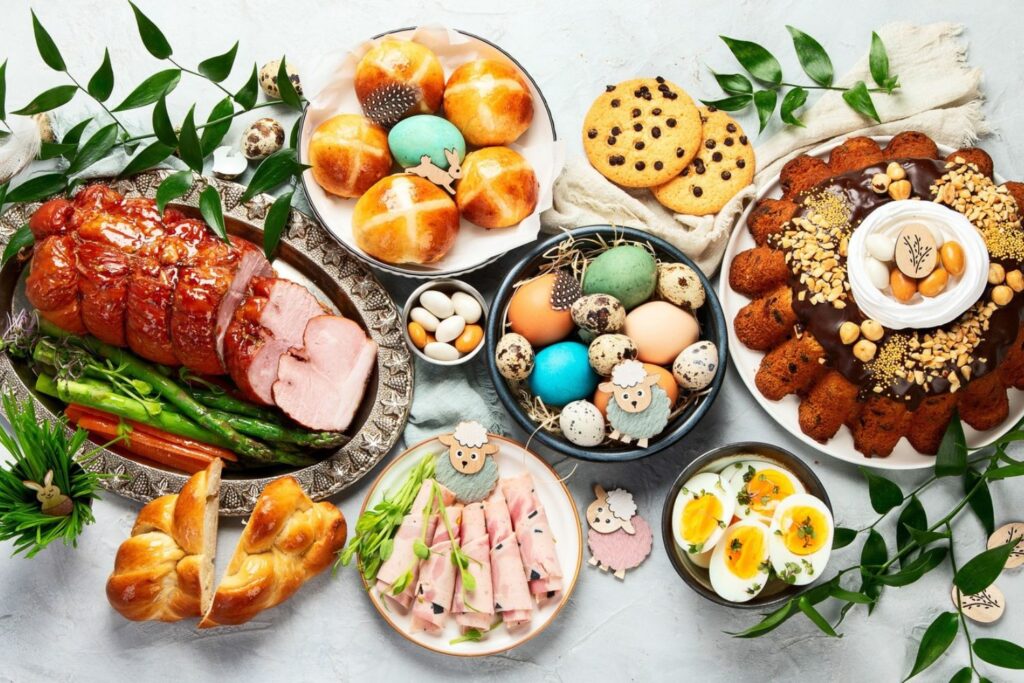
When selecting dishes for your Easter menu, it’s important to strike a balance between tradition and innovation. Start by identifying the key dishes that are essential for your family’s celebration – perhaps it’s a roast leg of lamb or a glazed ham that’s been passed down through generations. Once you’ve settled on the main course, build the rest of the menu around it.
Consider the dietary preferences of your guests, as well as the practicality of each dish. Choose recipes that can be made in advance or require minimal active cooking time, allowing you to spend more time with your guests. While the main course should be a showstopper, don’t overlook the importance of sides and desserts. Aim for a variety of flavors and textures, from the richness of scalloped potatoes to the freshness of a green salad. This will ensure your menu is well-rounded and satisfying for everyone.
Balancing Flavors: Sweet, Savory, and Fresh
A well-balanced Easter menu features a harmony of sweet, savory, and fresh flavors. The main course is often rich and savory, whether it’s a succulent roast lamb or a honey-glazed ham. To balance these bold flavors, include sides that offer freshness and acidity. Such as a lemony asparagus salad or roasted carrots with herbs. This contrast helps to cleanse the palate and keeps the meal from feeling too heavy.
Sweetness plays a subtle role in many Easter dishes, from glazed vegetables to fruity sauces. Desserts, of course, bring the sweetness to the forefront, with options like carrot cake and lemon bars providing a light and refreshing end to the meal. Achieving the right balance between sweet, savory, and fresh is the key to a memorable Easter dinner that leaves your guests feeling satisfied without being overwhelmed.
Classic Easter Appetizers to Kick Off the Feast
Appetizers set the tone for your Easter dinner and give your guests something to nibble on while the main course is being prepared. For a traditional Easter menu, opt for appetizers that are light, elegant, and easy to eat. Deviled eggs are a classic choice, and you can elevate them with modern twists like smoked paprika or fresh herbs. Another option is a spring vegetable platter, featuring seasonal produce like radishes, snap peas, and asparagus, served with a tangy dip.
Cheese boards, featuring a variety of cheeses, nuts, and fruits, are another popular choice that allows guests to snack at their leisure. For a heartier appetizer, consider serving mini quiches or savory tarts, filled with ingredients like spinach, goat cheese, and mushrooms. These bite-sized delights are perfect for whetting the appetite without spoiling the main event.
Deviled Eggs With A Modern Twist Of Traditional Easter Dinner
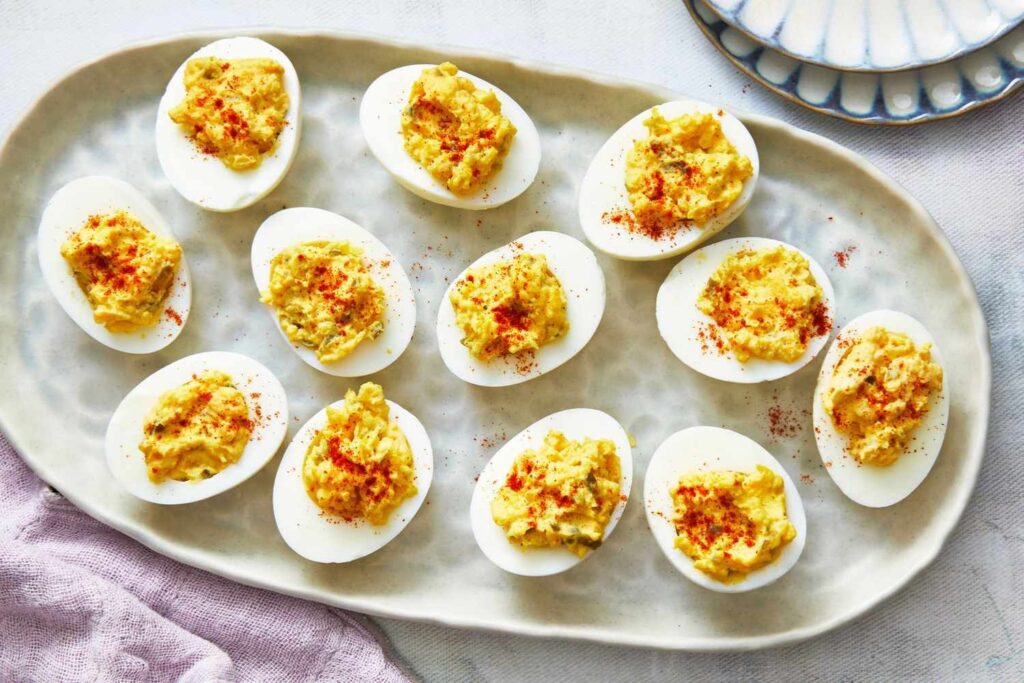
Eggs have long been a staple of Easter gatherings, and for good reason. They’re easy to make, delicious, and versatile enough to be adapted to suit a variety of tastes. To give your deviled eggs a modern twist, try incorporating unique ingredients or flavor combinations that elevate this classic dish.
Smoked salmon, for example, adds a luxurious touch, while sriracha or hot sauce brings a subtle heat that contrasts nicely with the creaminess of the egg yolk filling. You can also experiment with different toppings. Such as crispy bacon bits, chives, or microgreens, to add both flavor and visual appeal. Whether you stick to the classic recipe or opt for something more adventurous, deviled eggs are sure to be a hit with your guests.
Fresh Spring Salads for a Light Start
A fresh spring salad is the perfect way to kick off your Easter dinner. Providing a light and refreshing contrast to the richer dishes that will follow. The key to a great spring salad is using the freshest ingredients you can find. Think tender baby greens, crisp radishes, and sweet peas, all tossed in a zesty vinaigrette made with lemon, herbs, and olive oil.
For added texture and flavor, consider adding ingredients like crumbled feta cheese, toasted nuts, or fresh berries. You can also incorporate grains like quinoa or farro for a heartier salad that can double as a side dish. The beauty of a spring salad lies in its simplicity – by letting the ingredients shine. You create a dish that’s both healthy and delicious.
Traditional Easter Soups to Warm the Table
Soups offer a comforting and flavorful start to your Easter dinner. They provide warmth and a satisfying richness without overwhelming the palate. For a traditional Easter menu, opt for soups that highlight the fresh produce of the season while maintaining a rustic appeal. A classic option is a creamy asparagus soup, which combines the earthiness of asparagus with the smoothness of a light cream base. Garnishing with lemon zest or fresh herbs enhances its brightness, making it a perfect spring dish.
Another popular choice is carrot and ginger soup. The sweetness of carrots pairs beautifully with the warming spice of ginger, creating a vibrant, aromatic bowl that feels light but substantial. For a heartier option, consider a leek and potato soup. It’s creamy and indulgent yet balanced, offering the perfect lead-up to a richer main course. Whether served hot or cold, these soups can be made ahead, freeing up valuable time during the dinner prep while giving your guests a comforting dish to begin their meal.
Perfect Main Courses For A Traditional Easter Feast
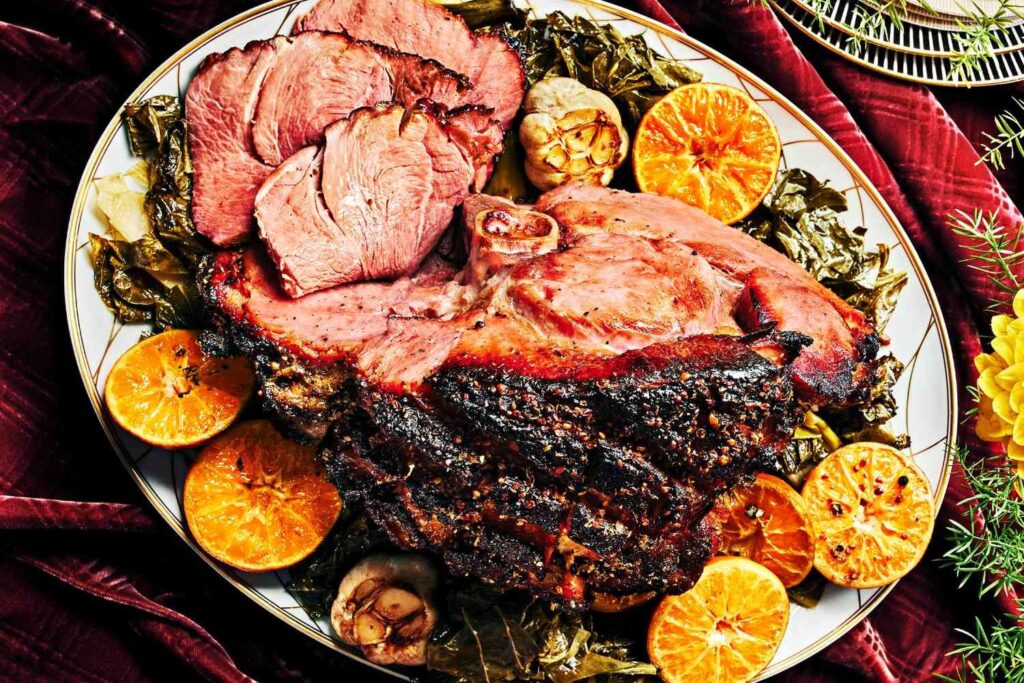
The main course is the centerpiece of any Easter dinner, and traditionally, it’s a grand affair. Roasted lamb or ham often takes center stage, but choosing the right main dish involves more than simply picking a protein. The key is to balance tradition with your personal preferences while ensuring the dish can comfortably serve a crowd. A succulent roast leg of lamb is a timeless choice, known for its tender texture and herbaceous flavor. Season it generously with garlic, rosemary, and thyme for a truly aromatic experience.
Alternatively, a honey-glazed ham offers a sweet and savory contrast that many guests love. The caramelized glaze adds both visual and flavor appeal, creating a mouthwatering presentation. For those looking to offer something a bit different, roast chicken or even a stuffed pork loin can provide an elegant alternative without straying too far from tradition. Whichever main course you choose, make sure it’s large enough to serve the whole group and flavorful enough to leave a lasting impression.
The Star of the Show: Roasted Lamb or Ham
At most traditional Easter dinners, the main attraction is either a perfectly roasted lamb or a honey-glazed ham. Both types of meat carry deep symbolic meaning—lamb represents sacrifice and renewal, while ham is often seen as a symbol of abundance. When choosing lamb, opt for a leg of lamb roasted with fresh herbs like rosemary and thyme. The slow-roasting process ensures the meat is tender, juicy, and rich in flavor, making it an irresistible option for your feast. Pairing it with a garlic and herb rub adds layers of complexity to the dish.
On the other hand, glazed ham is a sweet, savory delight that appeals to both adults and children alike. The glaze, often made from honey, brown sugar, and mustard, creates a rich, caramelized crust that contrasts beautifully with the tender meat. Whether served hot or at room temperature, ham is versatile and pairs wonderfully with a wide variety of side dishes. Both roasted lamb and glazed ham are showstoppers on their own and serve as the perfect centerpiece for a memorable Easter celebration.
Alternative Main Dishes for Non-Meat Eaters
If you’re hosting guests who don’t eat meat, offering a delicious vegetarian or pescatarian main course is a thoughtful way to ensure everyone feels included. A vegetable tart, filled with spring vegetables like asparagus, spinach, and leeks, makes for a beautiful and satisfying option. The flaky pastry and creamy filling provide a rich contrast to the fresh vegetables. Creating a dish that’s both indulgent and light.
Another option is a stuffed portobello mushroom, filled with a blend of quinoa, herbs, and cheese. These mushrooms are hearty enough to serve as a main course, and their savory flavor makes them a perfect alternative to meat-based dishes. For seafood lovers, consider serving a baked salmon filet with a herb crust. The salmon’s delicate flavor pairs beautifully with fresh herbs and a squeeze of lemon, offering a light yet satisfying alternative to traditional roasts. Including one or more of these alternative dishes ensures that your Easter menu caters to all dietary preferences.
Why Glazed Ham Is A Timeless Easter Classic?
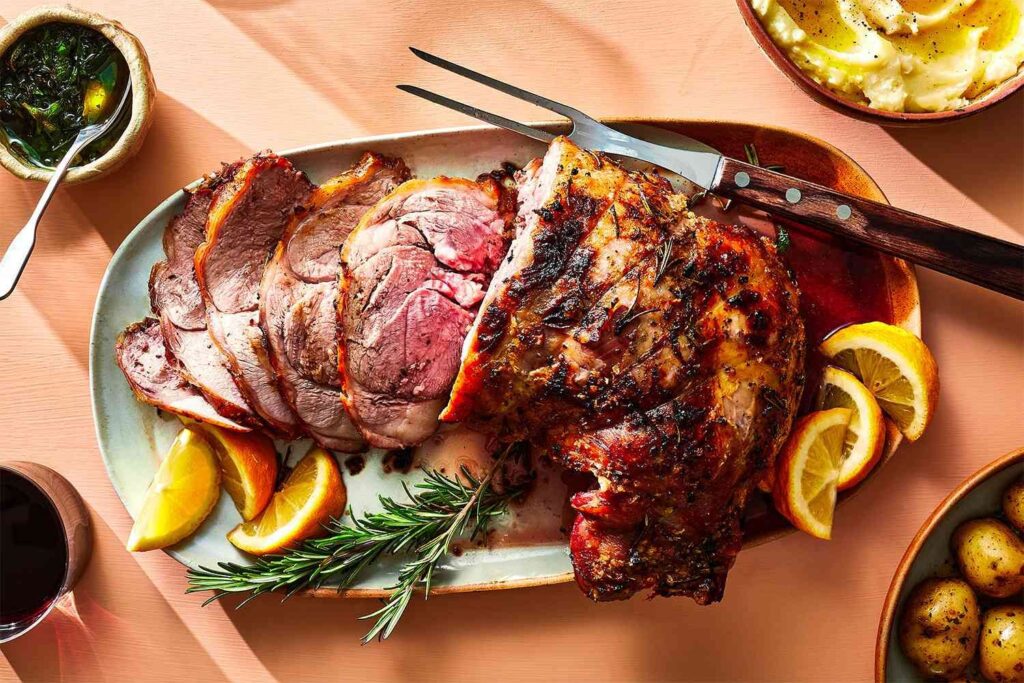
Glazed ham has been a centerpiece of Easter celebrations for centuries, and good reason. Its sweet and savory flavors appeal to a wide audience, making it a crowd-pleaser at any gathering. The beauty of glazed ham lies in its simplicity: a well-cooked ham requires minimal preparation, allowing the glaze to take center stage. Most glazes feature a combination of honey or brown sugar, mustard, and spices. Which caramelizes during cooking to create a sticky, flavorful crust.
Not only is ham delicious, but it’s also practical. It’s easy to slice and serve, and it can be enjoyed warm or at room temperature, making it ideal for buffet-style gatherings. Plus, leftover ham can be repurposed into a variety of dishes, from sandwiches to soups. Making it a versatile option that continues to deliver long after Easter Sunday has passed. The timeless appeal of glazed ham lies in its rich flavor, and ease of preparation. And the ability to bring a touch of tradition to any Easter table.
Roast Chicken: A Simple Yet Elegant Option
For hosts looking to offer a simpler, yet equally impressive, main course, roast chicken is an excellent choice. While lamb and ham are traditional favorites, roast chicken offers a lighter alternative that still feels special. The key to a perfect roast chicken lies in seasoning and technique. A generous rub of olive oil, garlic, and herbs such as rosemary, and thyme. And sage ensures the skin becomes golden and crispy while keeping the meat tender and juicy.
Roast chicken is incredibly versatile and pairs well with a wide range of side dishes, from roasted vegetables to mashed potatoes. Its relatively quick cooking time also makes it an ideal option for those who want to spend less time in the kitchen and more time enjoying the celebration. Whether you’re serving it whole or carving it at the table, roast chicken is an elegant option that can elevate any Easter meal while keeping the preparation simple.
Essential Side Dishes for a Traditional Easter Dinner
No Easter dinner is complete without a variety of flavorful side dishes to accompany the main course. The sides play a crucial role in balancing the richness of the meat and adding freshness and vibrancy to the table. Creamy scalloped potatoes are a family favorite, with layers of tender potatoes bathed in a rich, cheesy sauce. This comforting dish pairs beautifully with both lamb and ham, offering a creamy contrast to the savory meat.
Roasted vegetables are another essential component of a traditional Easter dinner. Asparagus, carrots, and Brussels sprouts are particularly popular in the spring, and roasting them with olive oil and fresh herbs brings out their natural sweetness. Fresh salads, such as a crisp garden salad or a tangy lemon and fennel salad. Provide a refreshing contrast to the heavier dishes and help cleanse the palate between bites. By including a variety of sides that offer different textures and flavors. You create a well-rounded meal that satisfies every guest.
Creamy Scalloped Potatoes: A Family Favorite

Scalloped potatoes are a classic comfort food that has earned its place at the Easter dinner table. The creamy, cheesy layers of thinly sliced potatoes are cooked until golden and bubbly, creating a dish that’s both rich and satisfying. The key to perfect scalloped potatoes is in the balance of flavors: a combination of sharp cheddar, cream, and garlic gives the dish depth, while the tender potatoes provide a soft, melt-in-your-mouth texture.
This dish pairs particularly well with roast lamb or ham, as the creaminess of the potatoes contrasts beautifully with the savory, meaty flavors of the main course. Scalloped potatoes can also be prepared in advance and baked just before serving, making them a convenient option for hosts who want to minimize last-minute kitchen stress. Whether you stick to the traditional recipe or add your twist, such as incorporating leeks or fresh herbs, scalloped potatoes are sure to be a hit with your guests.
Herb-Infused Roasted Vegetables For Traditional Easter Dinner
Roasted vegetables are a simple yet elegant side dish that showcases the flavors of fresh spring produce. Asparagus, carrots, and Brussels sprouts are popular choices for an Easter dinner, and roasting them brings out their natural sweetness and depth of flavor. To elevate the dish, toss the vegetables in olive oil and season them with a blend of fresh herbs such as thyme, rosemary, and parsley. Adding a squeeze of lemon juice or a sprinkle of balsamic vinegar just before serving can enhance the brightness of the flavors.
Roasted vegetables are incredibly versatile and can be paired with almost any main course, from roasted lamb to glazed ham. They also provide a healthy balance to richer dishes, offering a light and nutritious complement to the meal. Best of all, roasted vegetables are easy to prepare and can be made in large quantities, making them a great option for feeding a crowd. With minimal effort, you can create a side dish that’s both visually appealing and full of flavor.
Classic Dinner Rolls: Soft and Buttery Perfection
No Easter dinner is complete without soft, buttery dinner rolls to accompany the feast. These rolls are perfect for soaking up the rich juices of the main course or slathering with butter for a simple yet indulgent treat. The key to perfect dinner rolls is in the dough—yeast-based rolls that are allowed to rise slowly will result in a soft, fluffy texture with just the right amount of chew.
For a traditional touch, consider brushing the tops of the rolls with melted butter and a sprinkle of sea salt before baking. This creates a golden, flavorful crust that contrasts beautifully with the pillowy interior. Whether served warm from the oven or at room temperature, dinner rolls are a versatile side that pairs well with any Easter dish. Plus, they’re easy to make ahead of time and reheat just before serving, allowing you to focus on other elements of the meal.
Unique Easter Side Dishes For A Modern Twist
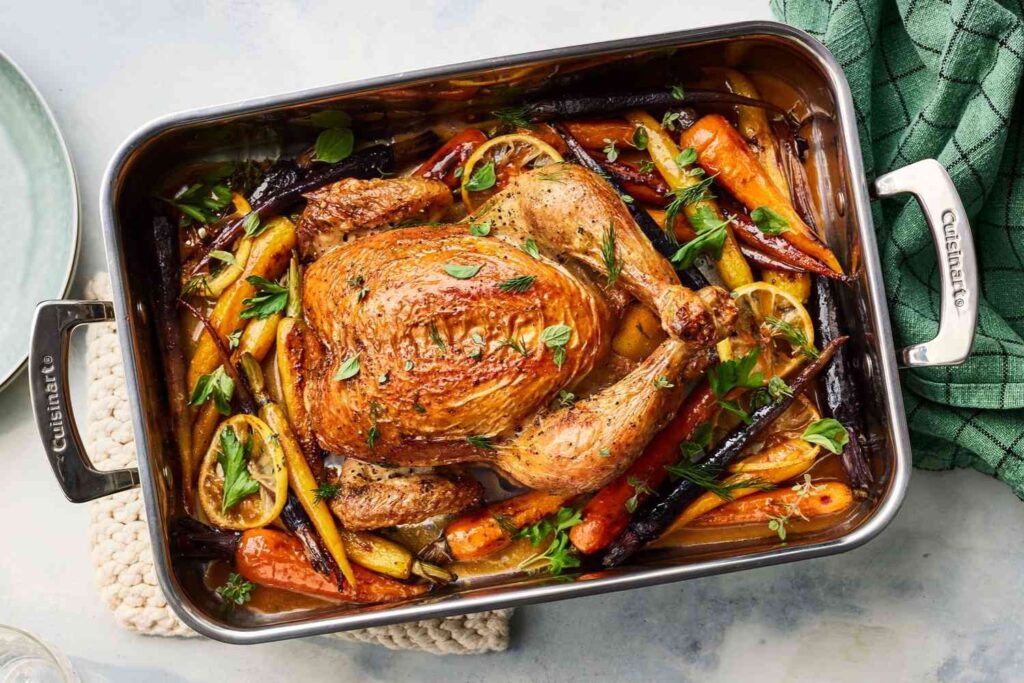
While traditional Easter side dishes are always a hit, adding a modern twist can make your menu stand out. Consider offering a quinoa salad with spring vegetables and a lemon vinaigrette for a light and refreshing option. Or try a roasted sweet potato dish with a maple glaze and toasted pecans for a sweet and savory contrast to the main course.
Another creative side dish is grilled asparagus with a poached egg and Parmesan. The combination of smoky, grilled asparagus, rich egg yolk, and nutty Parmesan elevates this simple vegetable into something truly special. By incorporating one or two unique side dishes into your menu, you can offer your guests a fresh take on the traditional Easter feast while still honoring the classic elements that make the meal memorable.
Asparagus with Lemon Butter Sauce For Traditional Easter Dinner
Asparagus is one of the quintessential vegetables of spring, making it a fitting addition to any traditional Easter menu. Its crisp texture and subtle flavor provide the perfect balance to rich main courses like lamb or ham. When paired with a bright and tangy lemon butter sauce, asparagus truly shines. The zesty citrus cuts through the natural bitterness of the asparagus, while the butter adds a velvety richness that ties the dish together.
To prepare, simply blanch or roast the asparagus until it reaches the perfect tender-crisp texture, then drizzle with the lemon butter sauce. For added depth of flavor, consider sprinkling a bit of grated Parmesan or toasting some pine nuts for a crunchy garnish. Asparagus with lemon butter is easy to prepare and can be served warm or at room temperature. Making it a versatile side that fits seamlessly into your Easter meal.
Sweet Potato Casserole with a Crispy Topping
Sweet potatoes offer a natural sweetness that pairs beautifully with savory dishes. And when transformed into a casserole, they become a standout side. This dish combines the creaminess of mashed sweet potatoes with a crunchy topping, creating a delightful textural contrast. A buttery crumble of pecans, brown sugar, and a touch of cinnamon gives this casserole a satisfying crunch. While the soft, velvety sweet potatoes beneath offer a comforting richness.
The beauty of sweet potato casserole is that it’s easy to prepare ahead of time. Simply assemble the dish and refrigerate until it’s ready to be baked. This makes it an ideal choice for hosts looking to reduce kitchen stress on the day of the feast. Whether served alongside roasted lamb or glazed ham, sweet potato casserole offers a sweet, savory. And crunchy delight that will have your guests asking for seconds.
Traditional Easter Dinner Desserts To Delight Your Guests
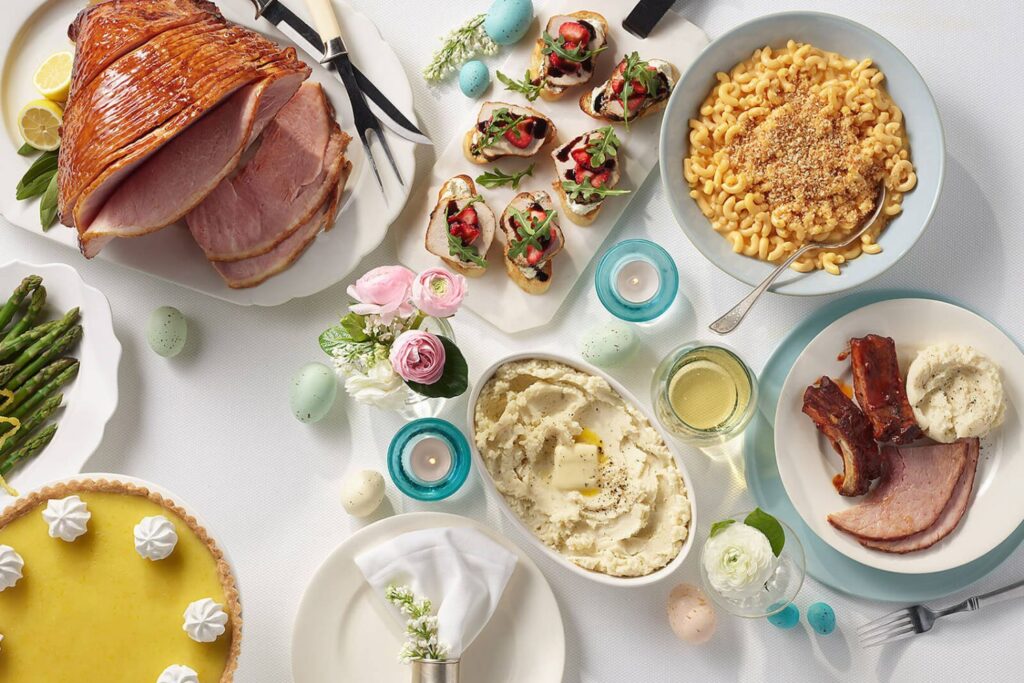
No Easter feast is complete without a selection of delicious desserts. While the main course may steal the spotlight, the right dessert can leave a lasting impression. Traditional Easter desserts often feature the bright flavors of spring. Such as citrus and fresh berries, as well as comforting, spiced sweets like carrot cake. Classic choices like hot cross buns, and lemon bars. And carrot cakes are crowd-pleasers that add a touch of sweetness to the end of the meal.
For something truly festive, consider making a layered cake decorated with pastel-colored icing or a fruit tart that showcases the season’s freshest berries. Whether you stick to classic recipes or add a modern twist. Easter desserts should feel light, fresh, and celebratory, providing the perfect conclusion to a memorable meal.
Hot Cross Buns: A Symbolic Traditional Easter Dinner Treat
Hot cross buns are a beloved Easter tradition, with their soft, spiced dough and iconic icing cross symbolizing the crucifixion. These sweet, yeasted buns are typically studded with raisins or currants and flavored with warm spices like cinnamon and nutmeg. Their history dates back centuries, and they remain a favorite at Easter tables around the world.
To make hot cross buns at home, you’ll need a bit of patience, as the dough must rise twice before baking. But the result is well worth the effort. Serve them warm from the oven, with a slather of butter, for a comforting and symbolic addition to your Easter meal. Whether enjoyed as part of breakfast or as a dessert, hot cross buns are a timeless treat that brings tradition and flavor to the table.
Classic Carrot Cake with Cream Cheese Frosting
Carrot cake is a dessert that has become synonymous with Easter celebrations. Its rich, spiced flavor and moist texture make it the perfect finale for a hearty meal. The addition of grated carrots not only adds sweetness but also creates a wonderfully tender crumb. What truly sets carrot cake apart, however, is its decadent cream cheese frosting. The tangy frosting balances the sweetness of the cake, while the addition of walnuts or pecans adds a delightful crunch.
For an extra touch of elegance, consider decorating the cake with edible flowers or candied carrots. This dessert is not only delicious but also visually appealing, making it a centerpiece-worthy addition to your Easter spread. Whether you’re serving a crowd or just a few close family members, carrot cake is a dessert that’s sure to leave a lasting impression.
Lemon Bars For A Zesty Finish
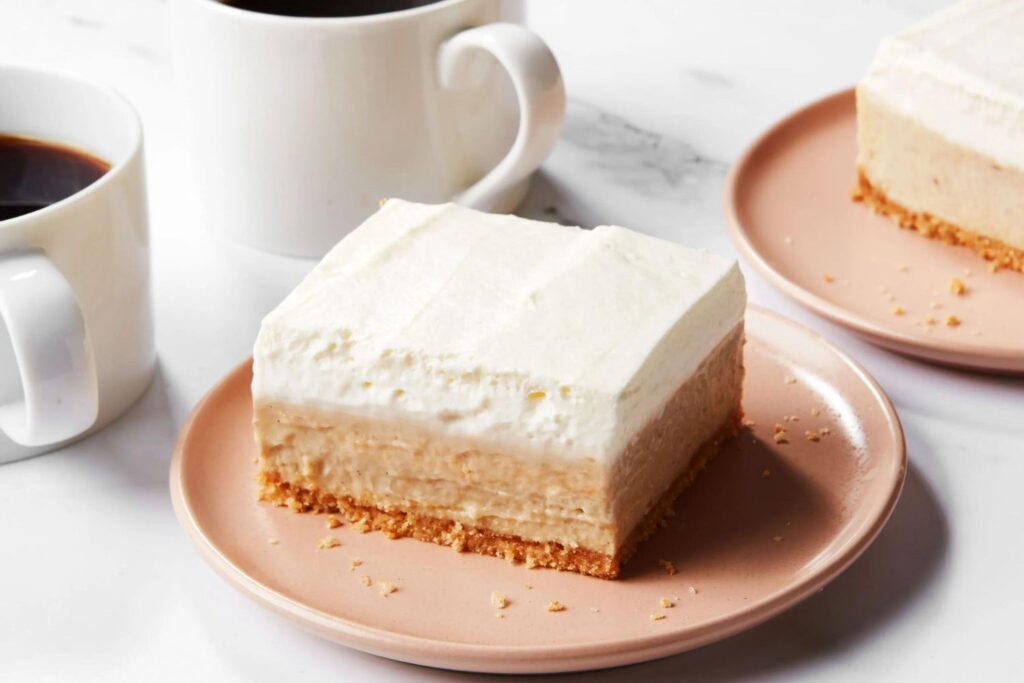
Their bright, tangy flavor provides a refreshing contrast to the rich dishes that often dominate an Easter dinner. The smooth, lemony filling sits atop a buttery shortbread crust, offering a delightful balance of textures and flavors. A dusting of powdered sugar on top adds a touch of sweetness and makes these bars look as good as they taste.
What makes lemon bars such a great choice for Easter is their simplicity. They’re easy to prepare and can be made ahead of time, allowing you to focus on the main courses and side dishes. Serve them chilled for a cool, zesty finish to your Easter meal. Lemon bars are the perfect dessert for those who crave something light and refreshing to end the feast.
Easter Desserts for Chocolate Lovers
For those who can’t resist the allure of chocolate, Easter is the perfect time to indulge. From rich chocolate cakes to gooey brownies, chocolate desserts bring an element of decadence to your Easter menu. Consider serving a flourless chocolate cake, which offers an intense. Fudgy flavor that pairs wonderfully with a dollop of whipped cream or a sprinkle of sea salt.
Chocolate Easter eggs, either homemade or store-bought, can also be used as a festive and edible decoration for the table. For a more sophisticated option, try making a chocolate tart with a crisp pastry crust and a silky chocolate ganache filling. No matter how you incorporate chocolate into your Easter menu. These desserts are sure to satisfy the sweet tooth of any guest.
The Perfect Beverages to Complement Your Easter Meal
Beverages play a key role in elevating the overall dining experience, and your Easter dinner should be no exception. When selecting drinks to complement your menu, consider offering a mix of alcoholic and non-alcoholic options that reflect the flavors of the season. Refreshing spring cocktails, such as a citrusy mimosa or a gin. And tonic with fresh herbs is perfect for toasting the holiday. For a non-alcoholic option, consider serving a sparkling lemonade or fruit-infused water. Which adds a festive touch without overwhelming the palate.
Wine is also a classic choice for Easter dinners. A light, crisp white wine, such as Sauvignon Blanc, pairs beautifully with roasted vegetables and lighter fare. While a full-bodied red, like Cabernet Sauvignon, complements richer dishes like lamb or ham. By offering a variety of drinks, you ensure that your guests can enjoy a beverage that enhances their meal and adds to the overall celebratory atmosphere.
Refreshing Spring Cocktails And Mocktails Of Traditional Easter Dinner
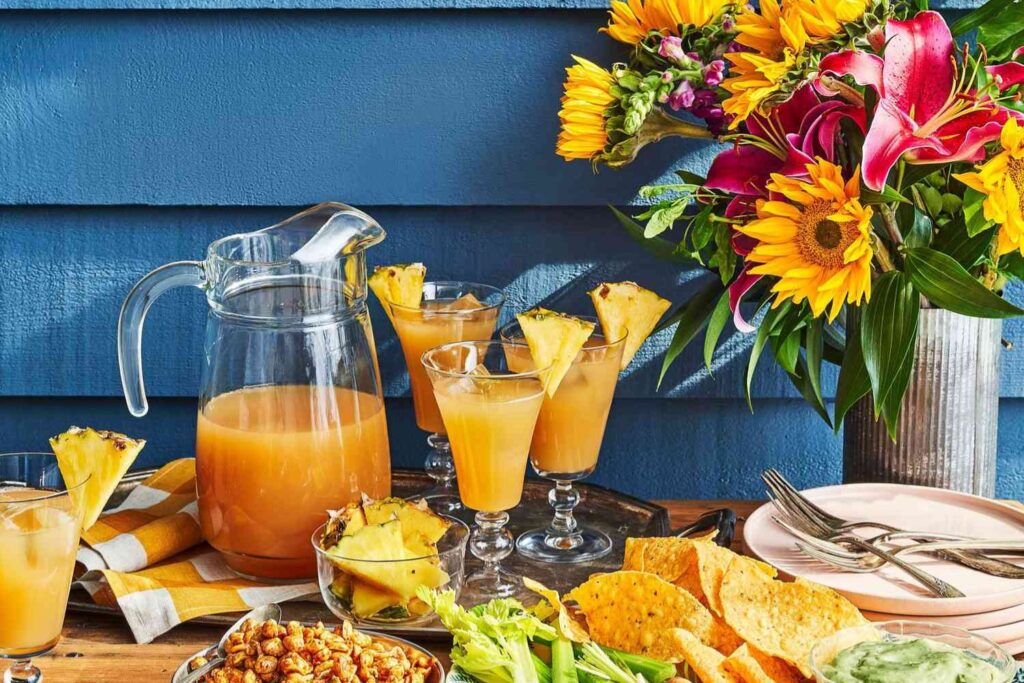
Springtime calls for light, refreshing beverages that reflect the bright, fresh flavors of the season. For an Easter celebration, consider serving cocktails that feature seasonal fruits and herbs. A strawberry basil mojito or a grapefruit rosemary spritzer are perfect examples of cocktails that are both festive and refreshing. The use of fresh herbs and citrus not only adds flavor but also enhances the visual appeal of the drink.
For those who prefer non-alcoholic options, mocktails can be just as exciting. A cucumber mint cooler or a berry lemonade offers a burst of flavor without the alcohol. Making them perfect for guests of all ages. By incorporating seasonal ingredients into your beverages. You can create drinks that are both delicious and visually stunning. Adding an extra layer of festivity to your Easter gathering.
Selecting Wines for a Traditional Easter Dinner
Choosing the right wine to pair with your Easter dinner can enhance the flavors of the meal and elevate the dining experience. For a traditional Easter menu featuring roasted lamb or ham, red wines are often the go-to choice. A rich, full-bodied wine like a Cabernet Sauvignon or a Syrah pairs beautifully with lamb. Complementing its bold flavors with deep, tannic notes. For ham, a slightly sweeter wine like Riesling or a light Pinot Noir can balance the salty, savory elements of the dish.
White wines, such as Chardonnay or Sauvignon Blanc, are ideal for lighter fare like roasted chicken or seafood dishes. They offer a crisp, refreshing contrast to the rich flavors of the meal and cleanse the palate between bites. When selecting wines for your Easter dinner, consider the flavors and intensity of your dishes to find the perfect match that enhances each course.
Time-Saving Tips for Preparing an Easter Feast
Hosting an Easter dinner can be a daunting task, especially if you’re preparing a traditional, multi-course meal. However, with a few strategic time-saving tips, you can simplify the process and reduce stress. One of the best ways to save time is to prepare as much as possible in advance. Many dishes, such as casseroles, desserts, and even some appetizers. Can be made the day before and simply reheated before serving?
Another helpful tip is to delegate tasks. Whether it’s asking guests to bring a dish or enlisting help with setting the table. Sharing the workload can make a big difference. Organizing your kitchen in advance, and ensuring you have all the necessary ingredients and tools, can also prevent last-minute scrambling. By planning and using these time-saving strategies, you’ll be able to enjoy the holiday without feeling overwhelmed.
Make-Ahead Dishes For Stress-Free Hosting
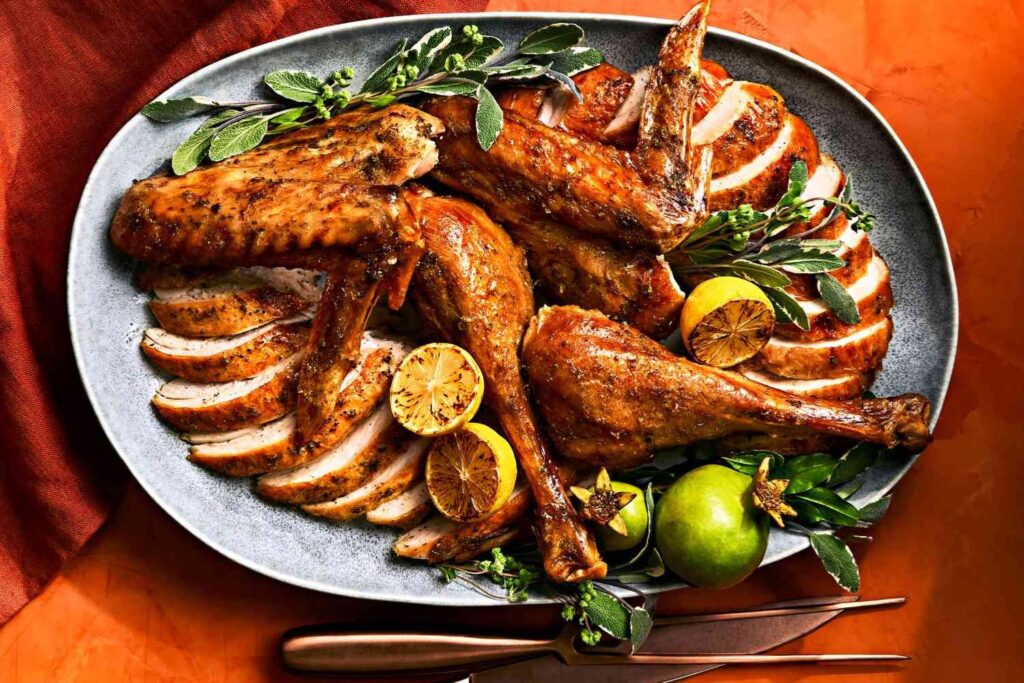
One of the best ways to minimize stress on Easter Sunday is by preparing make-ahead dishes. Casseroles, desserts, and even some side dishes can be made in advance. Allowing you to focus on other elements of the meal on the day of the event. Scalloped potatoes, for example, can be assembled the day before and baked just before serving. Similarly, desserts like carrot cake or lemon bars can be prepared ahead of time and stored in the fridge until needed.
Salads can also be prepped in advance by washing and chopping the ingredients. And storing them separately, then tossing them together just before serving. By taking advantage of make-ahead dishes. You’ll free up time to enjoy the holiday with your guests rather than being stuck in the kitchen all day.
How to Set a Beautiful Traditional Easter Dinner Table?
Setting a beautiful Easter table is just as important as the food itself. The table setting helps create a festive atmosphere and sets the tone for the meal. To achieve an elegant and inviting table, start with a clean, crisp tablecloth in a soft pastel or neutral color. Add a centerpiece that reflects the season, such as a bouquet of spring flowers or a bowl of decorated Easter eggs.
Consider using themed place settings or colorful napkins to add a touch of charm. For a more personal touch, you can create name cards for each guest or place a small favor, like a chocolate bunny or a decorated egg, at each seat. Candles or fairy lights can add a warm glow to the table, creating a cozy and inviting ambiance. With a few simple touches, you can transform your dining space into a beautiful setting that enhances the overall experience of your Easter meal.
Creating a Festive Atmosphere with Simple Decor
Decorating for Easter doesn’t have to be complicated or expensive. Simple, thoughtful touches can create a festive atmosphere that enhances your celebration without overwhelming your space. Start by choosing a color palette that reflects the spring season, such as soft pastels or fresh greens. Incorporate natural elements, such as fresh flowers, greenery, or even small potted plants, to bring the beauty of the season indoors.
Decorative touches like Easter-themed table runners, napkins, or place settings can add a playful yet elegant touch to the table. You can also hang a spring wreath on the door or place decorative Easter eggs in bowls or baskets around the room. By keeping your decor simple yet seasonal, you can create a warm. The welcoming atmosphere puts your guests in the Easter spirit.
YouTube Video
Conclusion
Hosting a traditional Easter dinner doesn’t have to be overwhelming. With thoughtful planning, a well-balanced menu, and time-saving strategies. You can create a memorable and enjoyable experience for both you and your guests. Whether you’re sticking to classic dishes or incorporating modern twists. The key is to focus on flavors that celebrate the season and create a sense of togetherness. From deviled eggs to roasted lamb, scalloped potatoes to carrot cake. Each dish plays a role in making your Easter meal special. By following these tips and embracing the joy of the holiday. You’ll be able to host an Easter dinner that’s delicious. And stress-free, allowing you to spend more time enjoying the company of loved ones.


